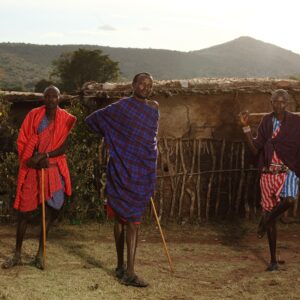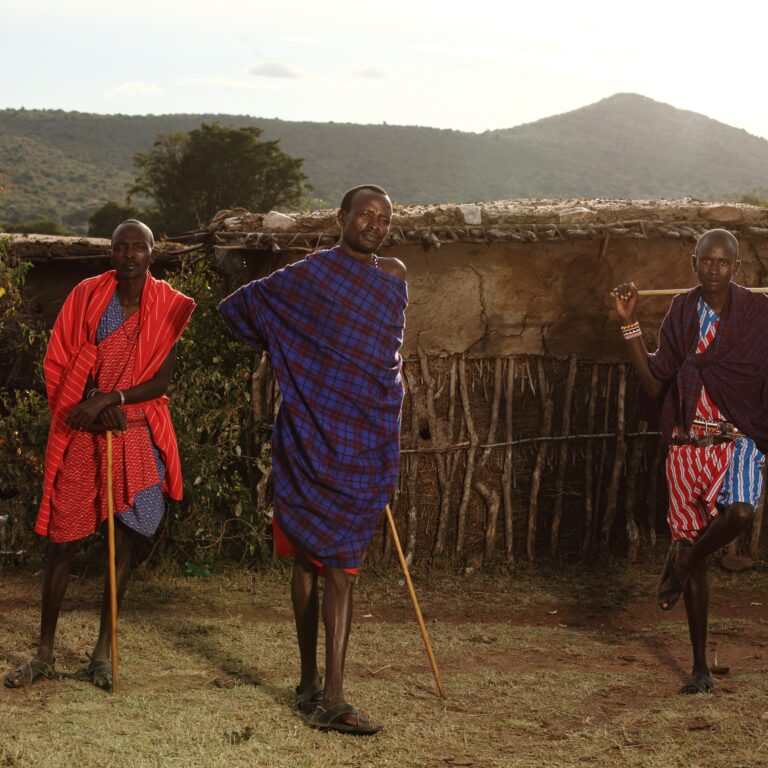The leopard. The very name whispers of stealth, power, and an almost mythical elusiveness. For many on an African safari, a leopard sighting is the ultimate prize, a fleeting glimpse into the secretive life of one of the continent’s most beautiful and adaptable predators. Their rosetted coats, piercing eyes, and graceful movements embody the wild heart of the savanna, the forests, and even the mountains. Leopards are solitary, adaptable hunters with unique traits. They are known for their ability to climb trees, their distinctive spotted coats called “rosettes,” and their excellent night vision, allowing them to hunt effectively at night. Leopards also have a varied diet, encompassing everything from insects to large ungulates, and they can be found in a variety of habitats across Africa and Asia.
But beyond their stunning appearance and elusive nature, leopards possess a wealth of fascinating characteristics and behaviors that make them truly unique among the big cats. From their climbing prowess to their remarkable adaptability, here are 11 interesting facts that shed light on the incredible world of the leopard.
1. Leopards Love to Spend Time in Trees
If you’re on safari in Tanzania’s Serengeti or South Africa’s Sabi Sand, your guide will often tell you to “look up!” for a leopard, one of the Interesting Facts About Leopards. There’s a very good reason for this: leopards are incredibly arboreal. Why they climb? Trees provide a safe haven from larger predators like lions and hyenas, which might try to steal their kills. A leopard can drag prey weighing up to three times its own body weight high into a tree, securing it for later consumption. Trees also offer excellent vantage points for spotting prey or surveying their territory, and a cool, breezy spot for a nap away from biting insects on the ground. Acrobatic skill. Their powerful limbs, retractable claws, and long tails (for balance) make them exceptionally agile climbers, both ascending and descending trees headfirst with remarkable ease. This climbing ability is a key survival strategy that sets them apart from most other big cats.
2. Leopard Spots Are Called Rosettes
Unlike the solid spots of a cheetah or the stripes of a tiger, a leopard’s distinctive markings are known as rosettes. These are irregular, rose-like patterns formed by clusters of black spots. The camouflage master: Interesting Facts About Leopards. This intricate pattern provides superb camouflage, allowing the leopard to blend seamlessly into a wide variety of habitats – from the dappled light of dense forests to the rocky outcrops of arid landscapes. The rosettes break up the outline of their body, making them incredibly difficult to spot, even when relatively close. Unique as a fingerprint: Interesting Facts About Leopards. Like human fingerprints, no two leopards have exactly the same rosette pattern, allowing researchers to identify individual animals.
3. Leopards Are Fast Runners, But Not Sprinters
While not built for the sustained, blistering speed of a cheetah, leopards are surprisingly quick and agile interesting facts About Leopards. They are capable of bursts of speed that make them formidable ambush predators. Speed. A leopard can reach speeds of up to 58 km/h (36 mph) over short distances. Strength and Agility. Their real strength lies in their powerful musculature, enabling impressive leaps (up to 6 meters horizontally and 3 meters vertically) and remarkable agility, allowing them to navigate complex terrain with ease. This combination of speed, strength, and agility is crucial for their hunting style.
4. Leopards Are the Smallest of the “Big Cats”
The term “Big Cats” typically refers to the four species of the genus Panthera that can roar: lions, tigers, jaguars, and leopards. Among these impressive predators, the leopard is indeed the smallest. Size comparison. An adult male leopard typically weighs between 30-70 kg (66-154 lbs), though larger individuals can exceed 90 kg (200 lbs). Females are generally smaller. This contrasts with the lion, which can weigh over 190 kg (420 lbs). Adaptability. Their relatively smaller size, combined with their incredible strength and stealth, is a key factor in their remarkable adaptability to diverse environments. It allows them to exploit a wider range of prey and hide more effectively.
5. Leopards Are Found on Several Continents
The leopard boasts the widest distribution of all wild big cats, Interesting Facts About Leopards, a testament to its incredible adaptability. Wide Range. While most commonly associated with Africa, leopards are also found across parts of Asia, from the Middle East to India, Southeast Asia, and even parts of the Russian Far East. Habitat Versatility. They thrive in an astonishing variety of habitats, including savannas, grasslands, dense rainforests, mountains, and even semi-desert regions, often surviving surprisingly close to human settlements.
6. Leopards are Solitary Animals (Mostly)
Unlike the highly social lion, leopards are generally solitary creatures. They prefer to live and hunt alone, only coming together for mating or when a mother is raising her cubs. Territorial. Both males and females establish and defend territories, which they mark with scent (urine, feces), claw marks on trees, and vocalizations. Male territories are typically larger and may overlap with those of several females. Self-reliant hunters. Their solitary nature means they must be highly skilled and self-reliant hunters, perfectly adapted to ambushing prey on their own.
7. Leopards Will Eat Almost Anything (Opportunistic Hunters)
Leopards are incredibly opportunistic and versatile hunters, making them highly successful predators. Their diet is one of the most diverse among all big cats. Dietary flexibility. They prey on a wide range of animals, from small insects and rodents to larger antelopes like impala, wildebeest calves, and even adult zebras. They will also hunt birds, reptiles, fish, and even domestic livestock if the opportunity arises. Adaptability to prey. This dietary flexibility allows them to survive in areas where other, more specialized predators might struggle, as they can adapt their hunting strategies to whatever prey is most abundant.
8. Leopards are Ambush Predators
Leopards are not built for long chases like cheetahs. Instead, they rely on supreme stealth, camouflage, and a powerful burst of speed to ambush their prey. Hunting Strategy. They patiently stalk their unsuspecting prey, using available cover (tall grass, bushes, rocky outcrops) to get as close as possible, sometimes within just a few meters. They then launch a sudden, explosive attack, overpowering the animal with their immense strength and powerful jaws. Nocturnal advantage. While they can hunt during the day, leopards are primarily nocturnal, using the cover of darkness to their advantage, enhancing their ambush tactics.
9. Leopards Have a Unique “Language”
Beyond their visual cues, leopards communicate through a variety of distinct vocalizations, forming a complex language. Distinctive sounds. The most famous is their distinctive “rasping” or “sawing” call, which sounds like wood being sawn. This call is used primarily to announce their presence to other leopards in their territory, especially during mating season. Other vocalizations. They also growl, snarl, hiss, purr (especially mothers with cubs), and emit a soft “chuffing” sound as a friendly greeting. Each vocalization carries a specific meaning, aiding in their solitary but communicative lives.
10. Leopard Cubs Have a Short Gestation Period
A female leopard’s journey to motherhood begins with a relatively short gestation period, allowing for a quick turnaround in breeding cycles. Gestation. The gestation period for a leopard is approximately 90-105 days (about 3 to 3.5 months). Litter size and development. She typically gives birth to a litter of 2-3 cubs in a secluded den (a cave, dense thicket, or hollow log). The cubs are born blind and helpless, entirely dependent on their mother for survival. They typically stay with their mother for 18-24 months, learning crucial hunting and survival skills.
11. Leopards are Vulnerable Treasures
Despite their adaptability and widespread distribution, leopards are increasingly facing significant threats, leading to their current conservation status. Conservation Status. Vulnerable (IUCN Red List). While this is a step below Endangered or Critically Endangered, their populations are declining across much of their range.
Major Threats:
Habitat Loss and Fragmentation. As human populations expand, forests are cleared for agriculture and development, shrinking the leopards’ hunting grounds and isolating populations. Human-Wildlife Conflict. Leopards are often persecuted by farmers protecting livestock, leading to retaliatory killings. Illegal Wildlife Trade. Though less targeted for their bones than tigers, leopard skins and body parts are still sought after in illegal markets. Prey Depletion. Overhunting of their prey species by humans can impact their food supply.
Witnessing a leopard on safari is more than just a magnificent photo opportunity; it’s a poignant reminder of their delicate existence and the critical need for global conservation efforts. Their continued survival depends on protecting their habitats, mitigating human-wildlife conflict, and combating illegal trade. Every sighting fuels appreciation and underscores the importance of safeguarding these incredible “ghosts of the bush” for future generations.
Leopards vs cheetahs.
What’s the difference between a cheetah and a leopard? Leopards and cheetahs are both spotted big cats but differ greatly. Leopards are powerful, solitary hunters, skilled climbers, and often drag prey into trees. Their build is stockier, with strong jaws and stealthy movements. Cheetahs, in contrast, are slender and built for speed, making them the fastest land animals. They hunt by day, using bursts of acceleration to catch prey on open plains. While leopards thrive in varied habitats, cheetahs prefer open savannas.
What is the difference between cheetah and leopard and jaguar.
Cheetahs, leopards, and jaguars are distinct big cats. Cheetahs are slim, built for speed, with black “tear marks” on their faces and solid black spots. Leopards are muscular climbers with rosette-shaped spots and live in Africa and Asia. Jaguars, native to the Americas, are stockier, with larger rosettes that have central spots. Jaguars are strongest, cheetahs fastest, and leopards most adaptable. Their behaviors, habitats, and hunting styles reflect their unique evolutionary paths.
Cheetah vs leopard vs jaguar speed.
Cheetahs are the fastest, reaching speeds up to 112 km/h (70 mph) in short bursts, ideal for chasing prey on open plains. Leopards are slower, around 58 km/h (36 mph), but rely on stealth and ambush rather than speed. Jaguars, built for power, run up to 80 km/h (50 mph) briefly but prefer stalking and pouncing. Each cat’s speed reflects its hunting style: cheetah for sprinting, leopard for surprise, and jaguar for strength.
cheetah vs leopard vs jaguar vs tiger vs lion.
Cheetahs are the fastest, built for speed, not strength. Leopards are stealthy climbers, thriving in diverse habitats. Jaguars, stocky and powerful, crush prey with their jaws. Tigers are the largest, solitary hunters known for strength and swimming ability. Lions, social and regal, live in prides and dominate open savannas. Each big cat excels in its realm—cheetah in speed, leopard in adaptability, jaguar in power, tiger in might, and lion in leadership.
Differences between Tiger, Jaguar, Leopard and Cheetah.
Tigers are the largest, powerful swimmers with bold stripes and a solitary nature. Jaguars, native to the Americas, are stocky with rosettes and strong jaws for crushing skulls. Leopards are agile climbers, found in Africa and Asia, with smaller rosettes and unmatched adaptability. Cheetahs are slim, built for speed, with solid spots and black tear marks. While tigers and jaguars rely on strength, leopards on stealth, cheetahs dominate in speed—each uniquely evolved for their environment.
cheetah vs leopard vs jaguar vs panther vs puma vs tiger
Cheetahs are the fastest, slender with solid spots and tear marks, built for sprinting. Leopards are powerful, adaptable climbers with rosettes. Jaguars, stocky and strongest, have bold rosettes with central spots and crush prey with powerful jaws. Panthers are melanistic leopards or jaguars, appearing black but still spotted. Pumas, also called cougars, are solitary, tawny cats native to the Americas. Tigers are the largest, striped and strong swimmers. Each cat has distinct traits shaped by habitat and hunting style.
lion vs tiger vs cheetah vs leopard vs jaguar vs panther vs puma








